
A designated historical site in Taipei City — The architectural and historical significance of Wistaria Tea House. Architect Chen Qinzhong
The value and significance of Wistaria Tea House lie not only in its architectural history and structural elements but also in the intellectual energy that has been sparked and accumulated within this space.
As Professor Xia Zhujiou once said, "Wistaria Tea House is part of Taiwan's political and urban history." It is also the first designated historical site in Taiwan characterized by its humanistic historical spirit and tangible public space.
Each space within Wistaria Tea House holds a unique appearance and historical memory. Through '3D virtual reality' and the 'Intimate YouTube tours' video series, we overturn conventional guided tours. Exploring Wistaria Tea House's special history, architecture, socio-political context, tea culture, artistic aesthetics, and more, we experience every aspect of Wistaria Tea House together. It transforms Wistaria from just a tea house into a living historical monument, evolving with the pulse of history.
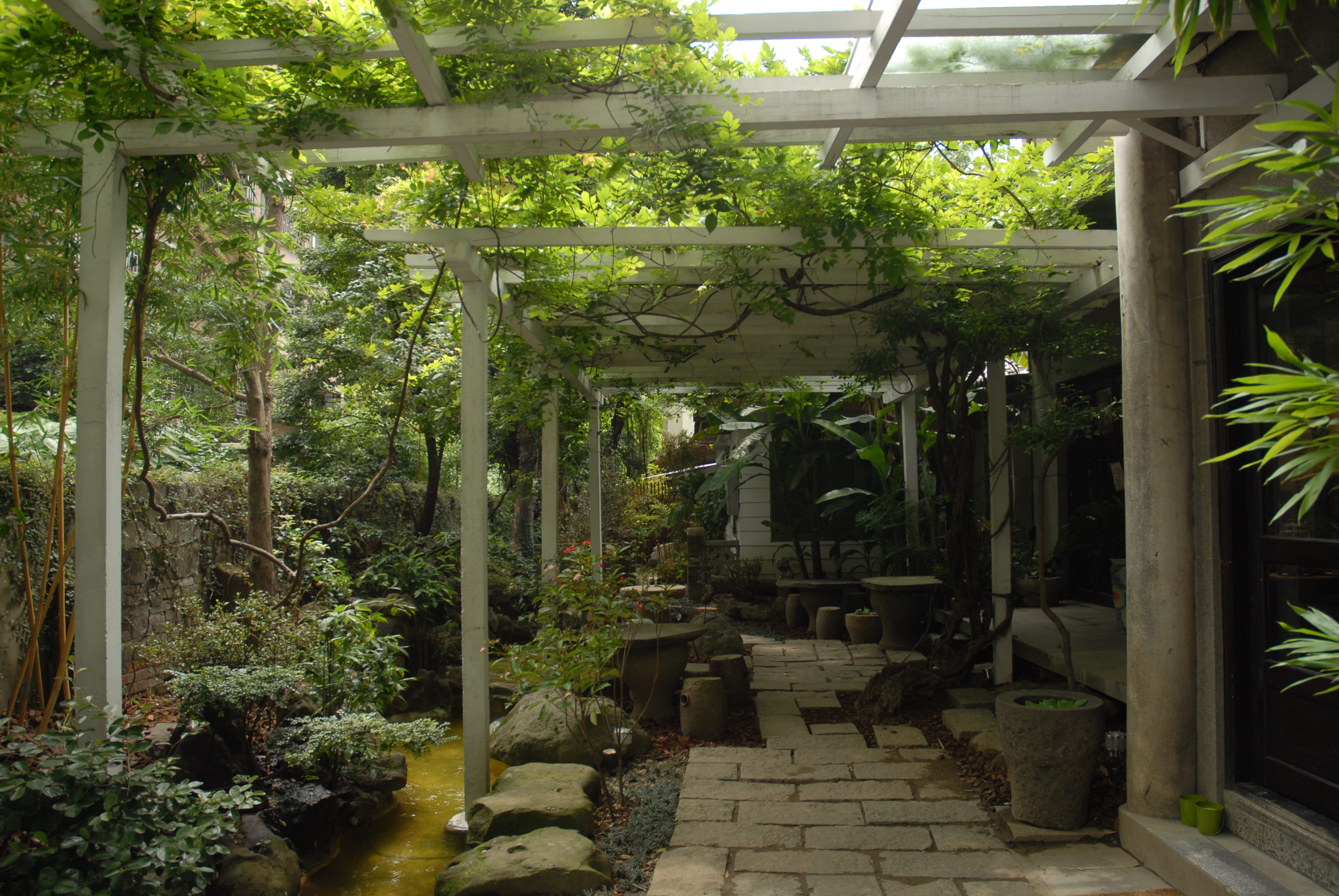
Garden
Wistaria Tea House is named after the three wistaria trees in its garden, the oldest of which is estimated to be around 90 to 100 years old, planted during the Japanese colonial period. While the main building has undergone several expansions, the old stone mill and lion carvings in the garden date back to the early days of the Republic of China.
In the 1990s, when the garden was redesigned, the original pond was expanded and lengthened. Children often come to Wistaria Tea House after school to watch the lively koi fish in the pond, injecting vitality into the old house.
The wistaria blooms in spring, usually around April and May, with a very short flowering period of about two weeks. The light pinkish-purple flowers require ample sunlight and water. In the early days of blooming, the ground is covered in a romantic flurry of pinkish-purple petals, although in recent years, due to the rise of nearby high-rise buildings, sunlight has become insufficient, and the bloom is not as vibrant as before.
The old wistaria has stood here through many seasons, witnessing the different changes of Wistaria Tea House over the years, serving as a vivid symbol that is deeply etched in the memories of many.
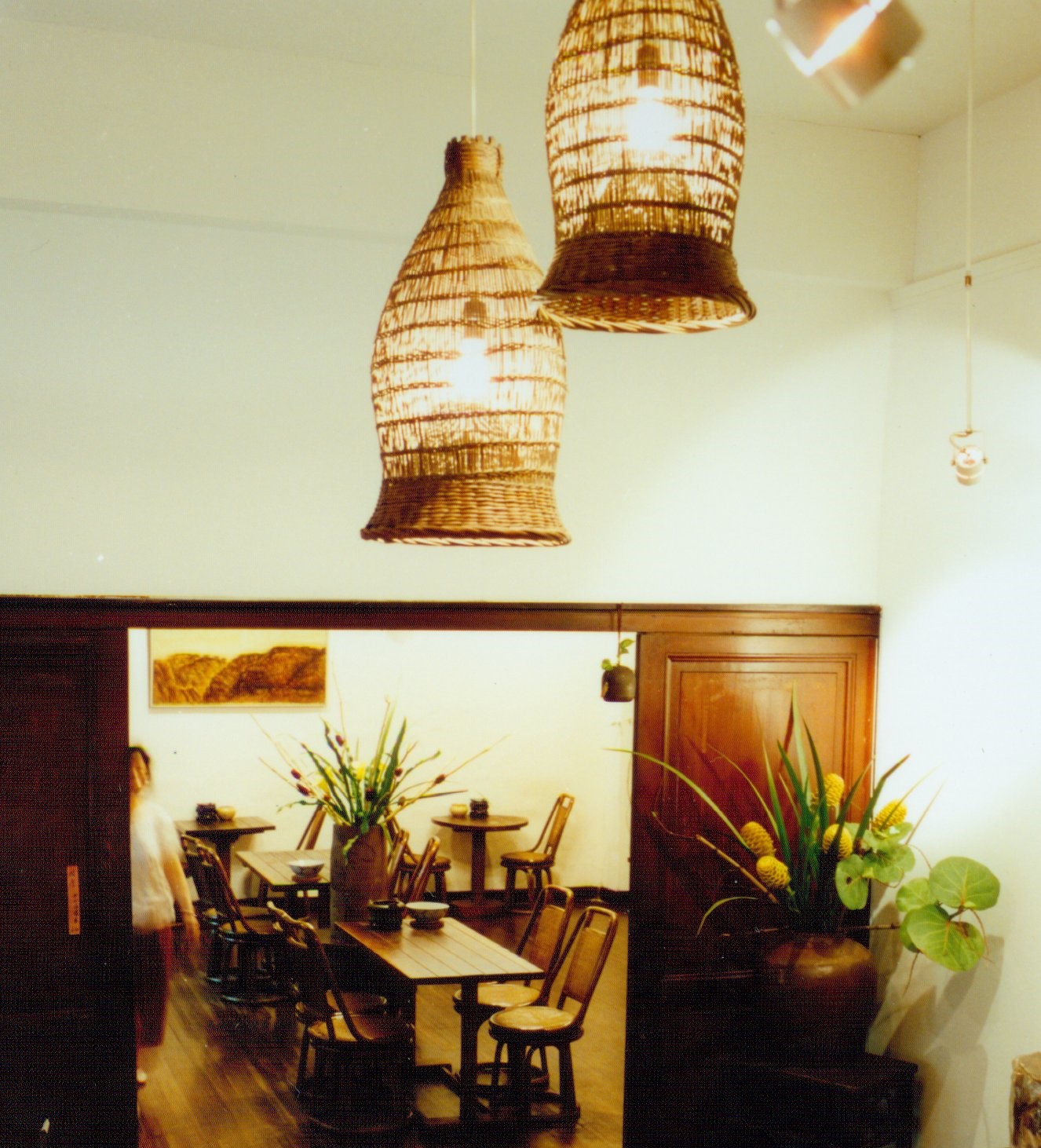
The Foyer
The foyer serves not only as a reception area for guests but also as a space for showcasing and selling various types of tea leaves and tea utensils within the establishment.
Don't forget to look up at the fish trap lantern above the foyer, originally used for catching fish and shrimp. Its graceful design, repurposed as a lantern, enhances the historical ambiance of the old house. It also represents the fusion of the simple aesthetics of nature and the rich cultural heritage of Wistaria Tea House.
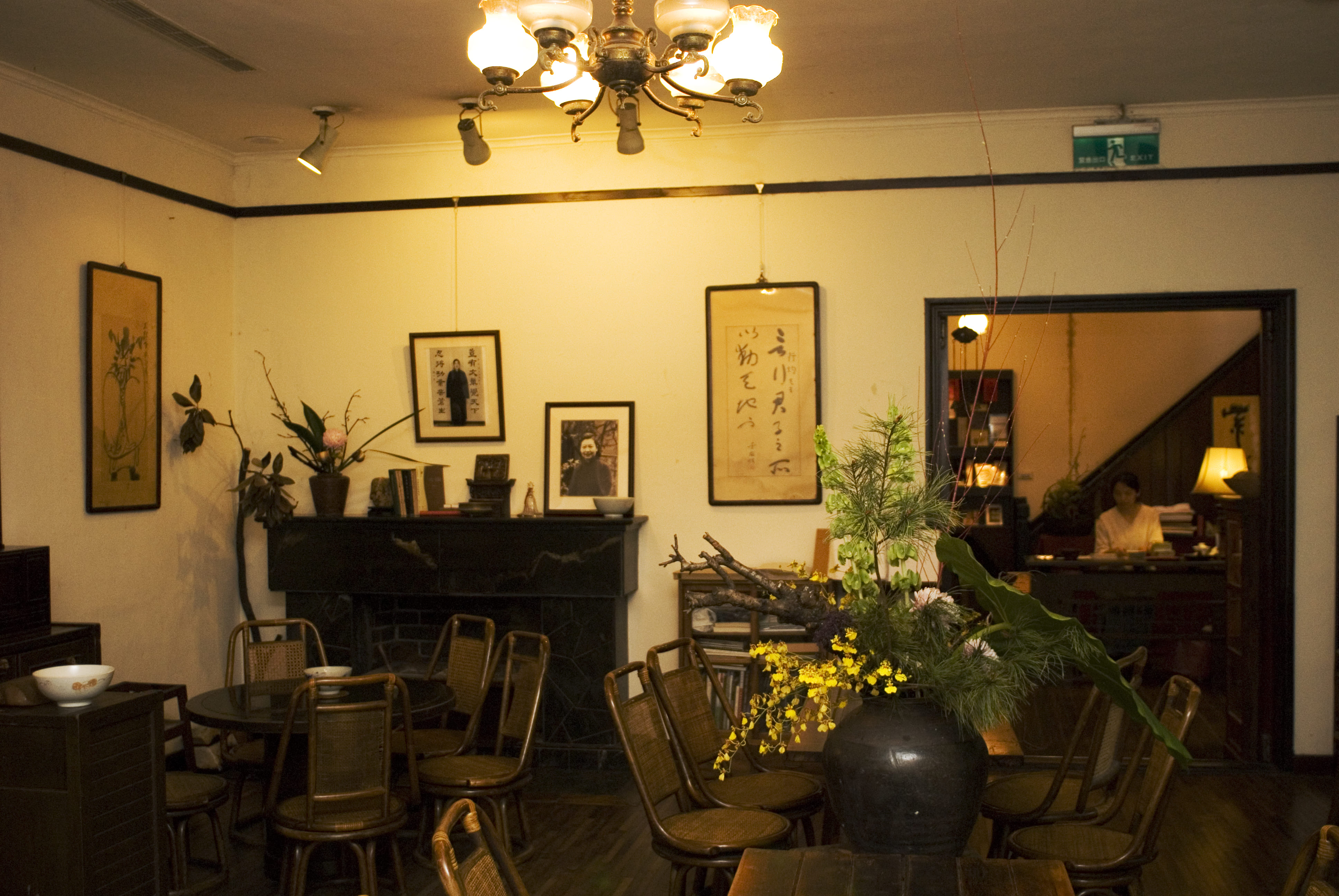
The Main Hall
The main hall, originally the living room during its residential period, has undergone multiple renovations. During the day, natural light floods in through the floor-to-ceiling windows, while at night, the warm glow of yellow lights creates a cozy atmosphere. During the time of Professor David Chow, the former owner, this space was often used for discussions with scholars who cared about the development of freedom and democracy in Taiwan, such as Xia Daoping, Hu Shi, as well as the young Li Ao and Chen Guxing. It is widely recognized as the birthplace of Taiwan's liberal movement.
Above the fireplace, one can see photos of Professor David Chow and his wife, alongside a calligraphy piece by Zhao Hengti, inscribed with Mr. Chow's couplet: "How can one feel at ease with literary pursuits while witnessing the suffering of the world?" This reflects the concerns of the old master, a traditional Confucian scholar, for the nation and its people. Mainland scholar Zhu Xueqin once wrote an article deeply moved by this couplet.
On the long table outside Wistaria Tea House, there is a set photo from the 1994 film "Eat Drink Man Woman" by director Ang Lee, depicting the scene where the male and female protagonists are drinking tea. Many tea enthusiasts often take photos here, making this corner a frequently reserved seat in the establishment.
In addition, wooden "file drawers" can be found in various corners of the tea house, containing writings from several cultural friends who have had close relationships with Wistaria Tea House in the past, such as Long Yingtai, Chen Wenshen, Shi Shuqing, Lei Xiang, and Lin Zhuoshui. Their articles narrate memories and emotions from their visits to Wistaria Tea House in the past, worth savoring.
In his early years, Qiu Yacai often sat alone in a corner of the main hall, painting and writing, drawing inspiration from the tea guests, tea people, and even the owner coming and going in the tea house. Before becoming famous, Chow Yu had a long-standing friendship with him, sponsoring him with canvas and paints, which has also become a legendary tale of Wistaria.
The flower arrangements at Wistaria are also worth admiring. Wistaria's tea people select flowers from the flower market every week, then create different floral scenes for guests based on the season, weather, and mood. Without adhering to a fixed style, it is a pure dialogue from the heart and with the environment, forming its unique style over the years.
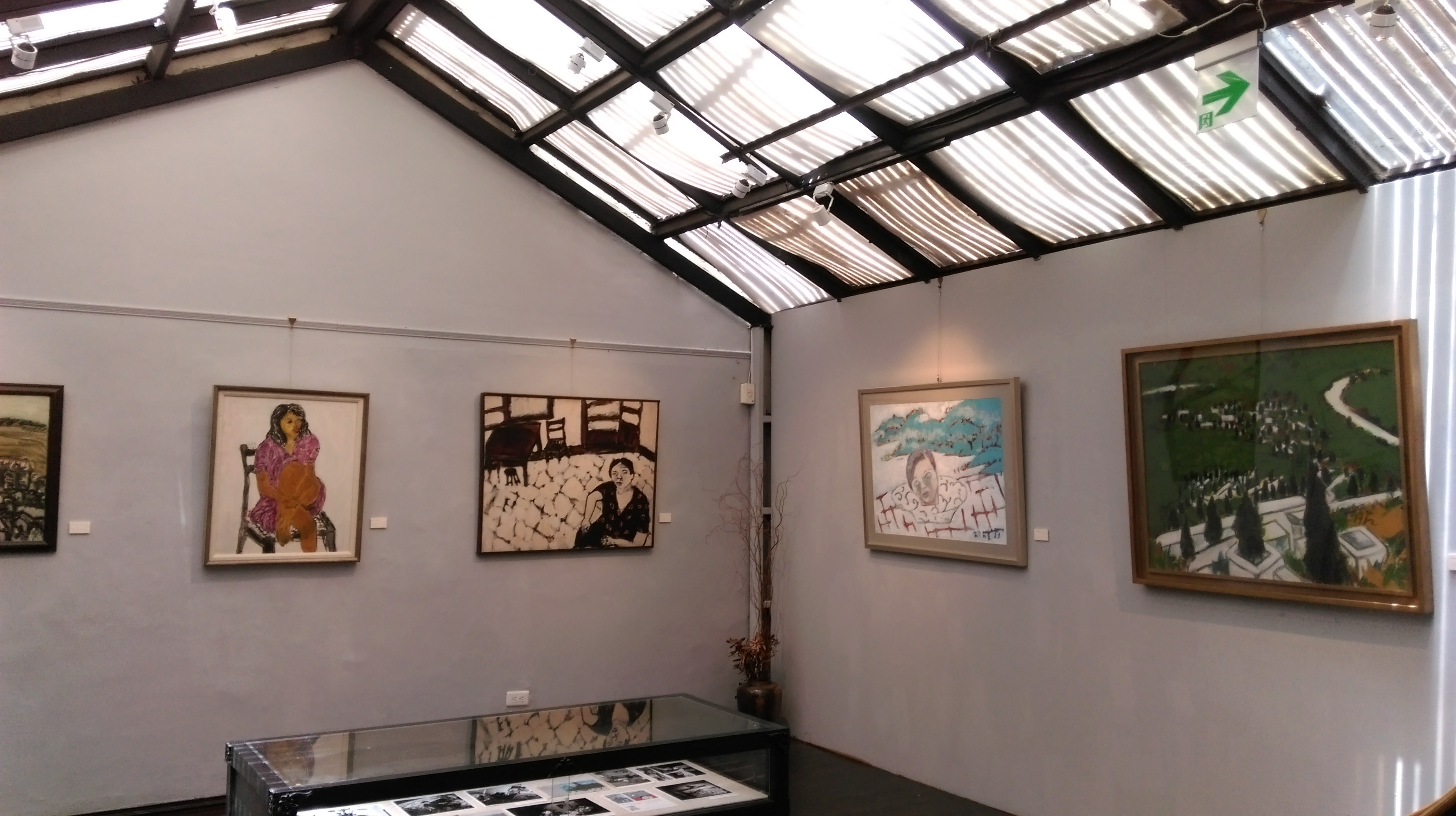
The Flower Hall
The flower hall, originally the backyard during its residential period, was converted into a flower art exhibition and sales area when the tea house opened in 1981. Later, it was enclosed to become an indoor tea room and is now used for hosting art exhibitions and market events. The atmosphere is serene and simple, with a translucent roof, earning it the nickname "Sunlight Gallery".
In one corner of the flower hall, one can see the preserved red brick wall and the back of the fireplace, showcasing the fusion of Eastern and Western styles at Wistaria Tea House. The fireplace, added in the 1950s, reflects Professor David Chow's early life experiences studying in the UK and Germany.
Since its reopening in 2008, artists such as Xi Song, Ye Shiqiang, Guo Juanqiu, Yu Peng, Zheng Zaidong, and Wu Shiwei have held exhibitions here, earning favorable reviews and building a strong reputation.
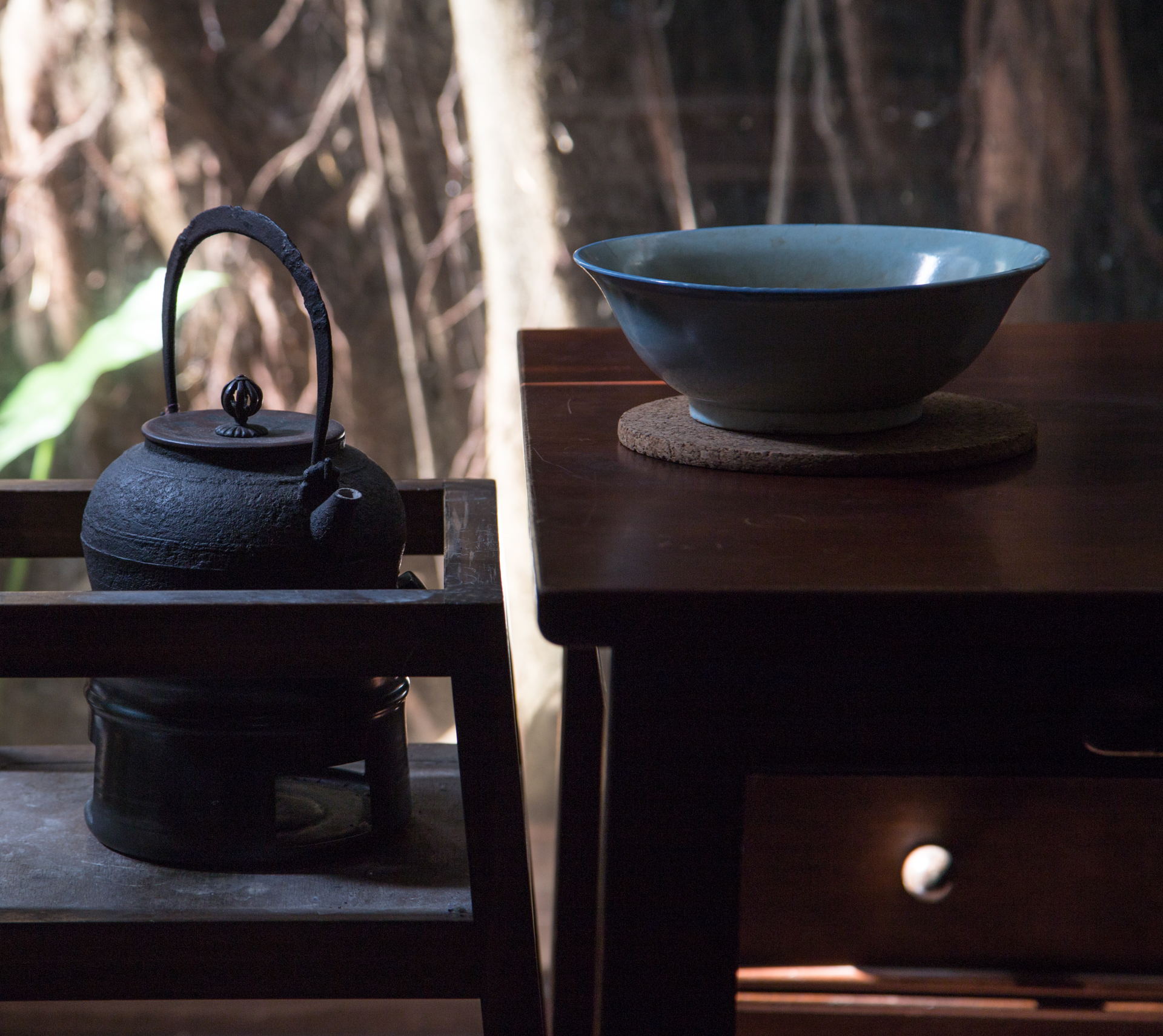
The Purple Green House
This room was constructed using materials from a wooden garage that was dismantled in 1973. It was renovated into a glass partition in 2007. From one side, you can clearly see the appearance of the banyan tree climbing and growing on the roof. The glass door on the other side can be opened to the flower hall for events and exhibitions.
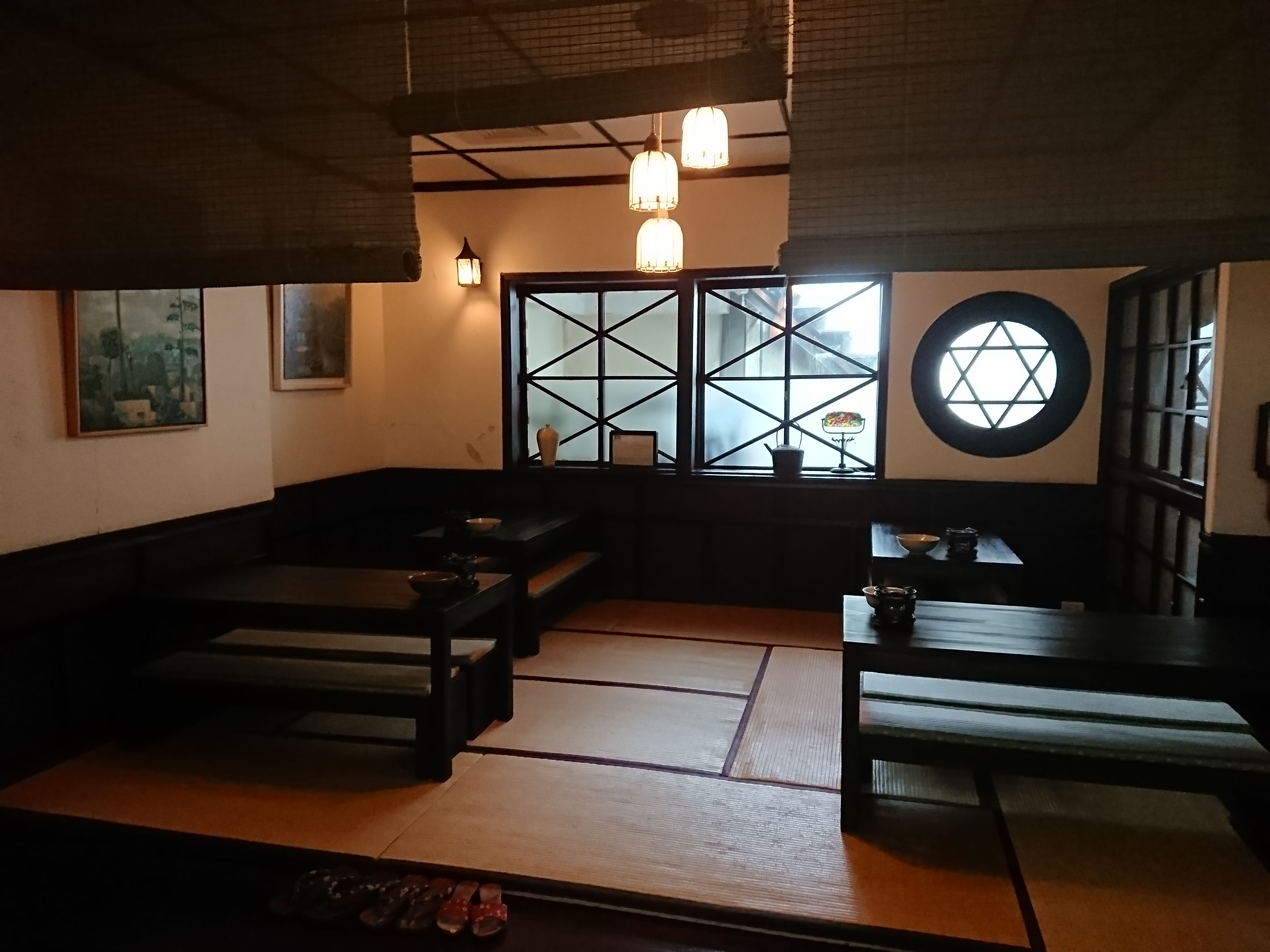
The Hall of Protection
Originally the study and dining room during its residential period, this area retains its most original appearance with its ceiling, old window frames, and antique cabinets. Separated from the outside by bamboo blinds, the lighting is dim, creating a dim and mysterious atmosphere. It can be used for private tea gatherings or lively gatherings.
In the center of the circular window in the front, there is a hexagram pattern, the unique style of which has an unknown origin. On the left wall, there are paintings by artist Zhou Chengliang hanging.
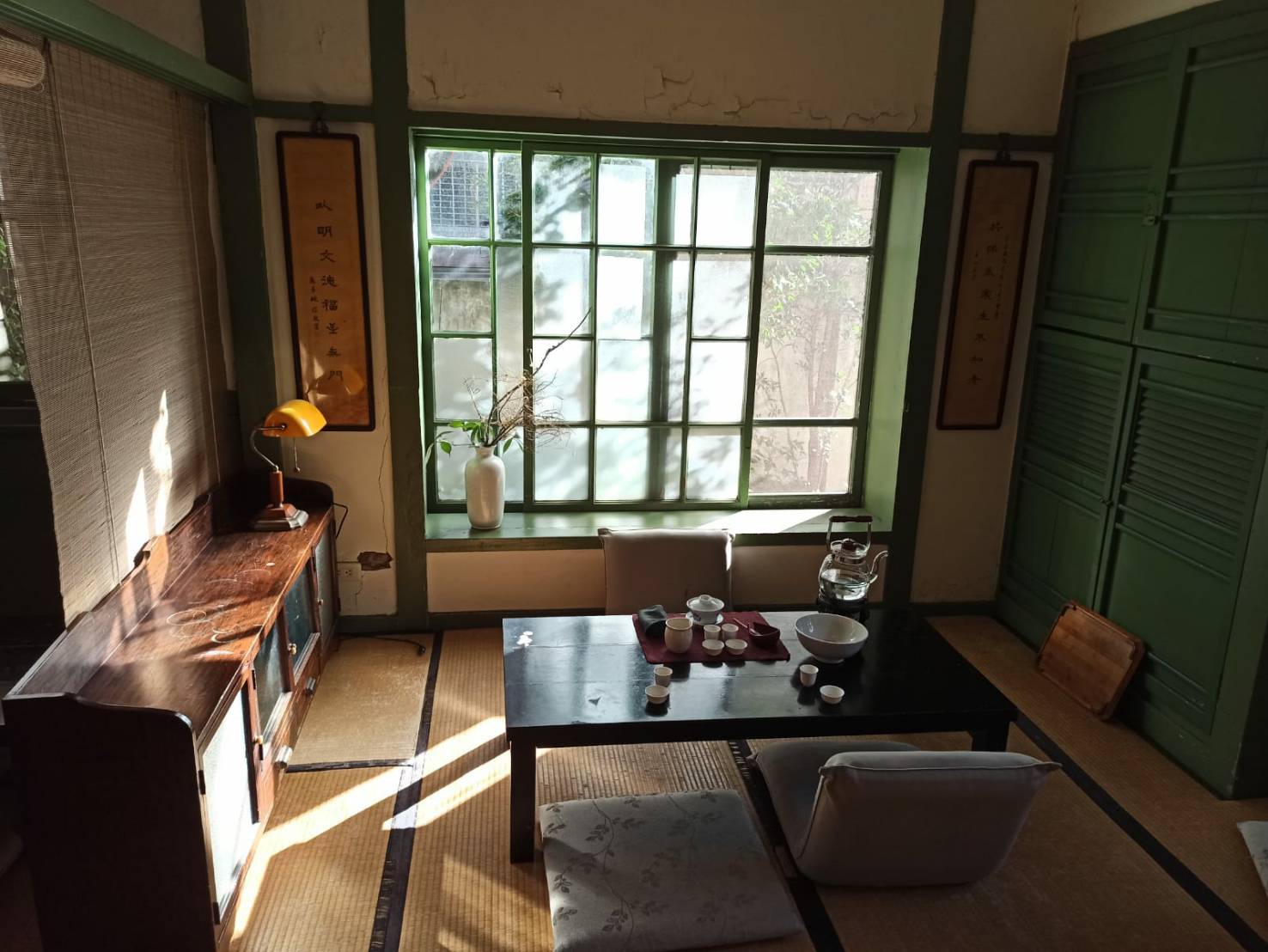
The Purple Perilla House
Originally the entrance hall during the Japanese-style dormitory period, the area below the tatami mat retains the earliest image of the entrance hall with pebble flooring. In 1954, it was rebuilt as a bedroom.
In 1988, a minority of intellectuals who persisted in social ideals founded the "Taiwan Social Research Quarterly" here. For more than twenty years, editorial meetings were held in this booth every month. From the early days of being sponsored by Wistaria Tea House for venue and tea, to self-sufficiency today, this publication has stood for more than twenty years, witnessing the political, economic, and cultural changes in Taiwanese society. There is a group photo of the main members of the quarterly in their early years on the wall.
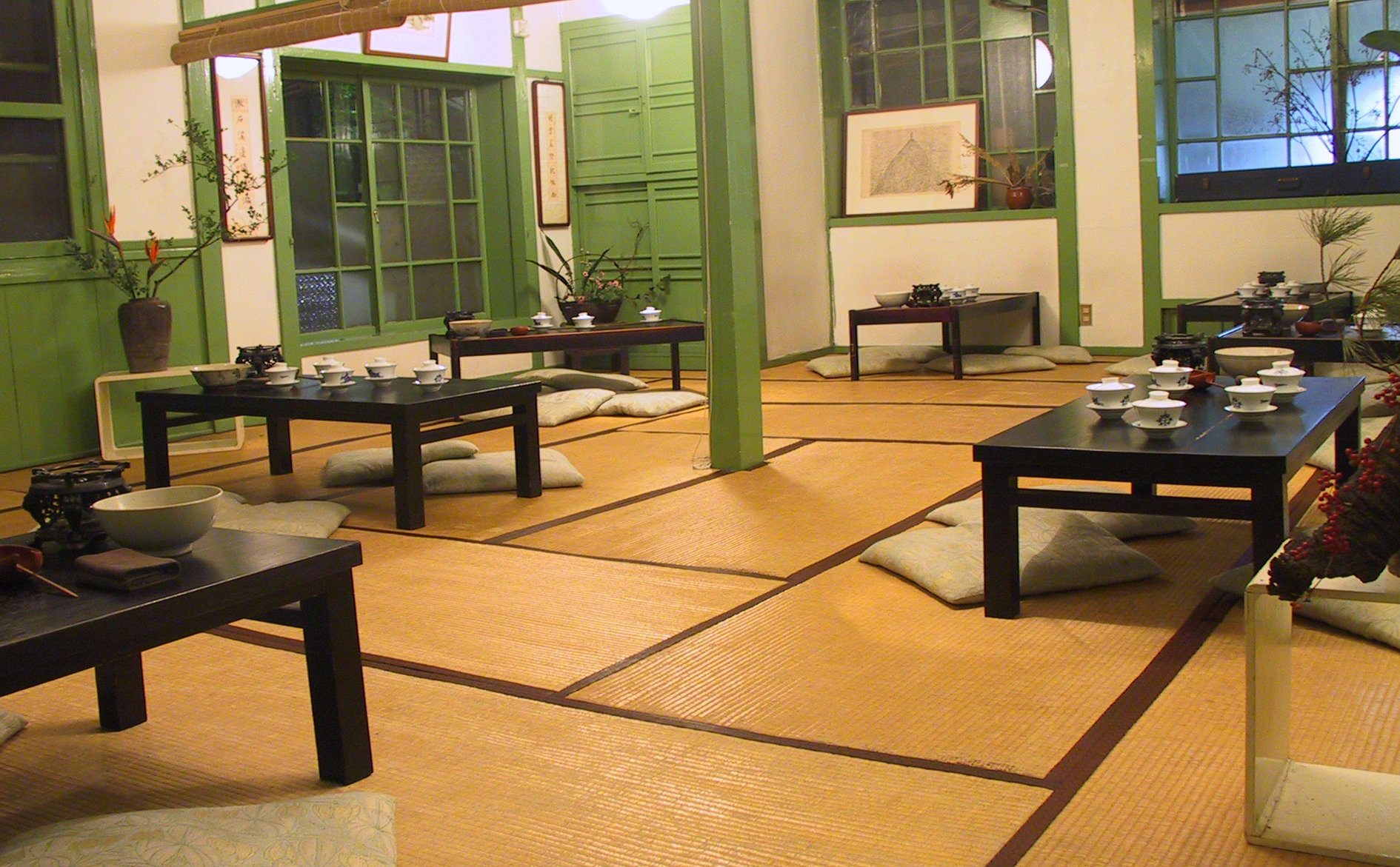
Fortuitous Destiny Meeting Room
During its residential period, this space served as the master bedroom, dining room, study, and various other purposes, embodying the most authentic Japanese-style dormitory features. It retains old windows, partition crossbars, and a central wooden pillar. Originally equipped with sliding doors, it is now divided by bamboo blinds, presenting a soft and comfortable feeling in ample natural light.
In 1999, during Mayor Chen Shui-bian's tenure, he met with mainland democracy activist Wei Jingsheng here and presented him with a "mayor's hat". Large lectures and performances, as well as tea gatherings, are often held here, making it the most frequently used space for events. Through tea gatherings, it has co-hosted interdisciplinary activities such as Southern Music Gatherings, Guqin Ensembles, Sinology Lectures, Poetry Recitals, Marionette Theater, Sitar Concerts, Folk Song Performances, and more.
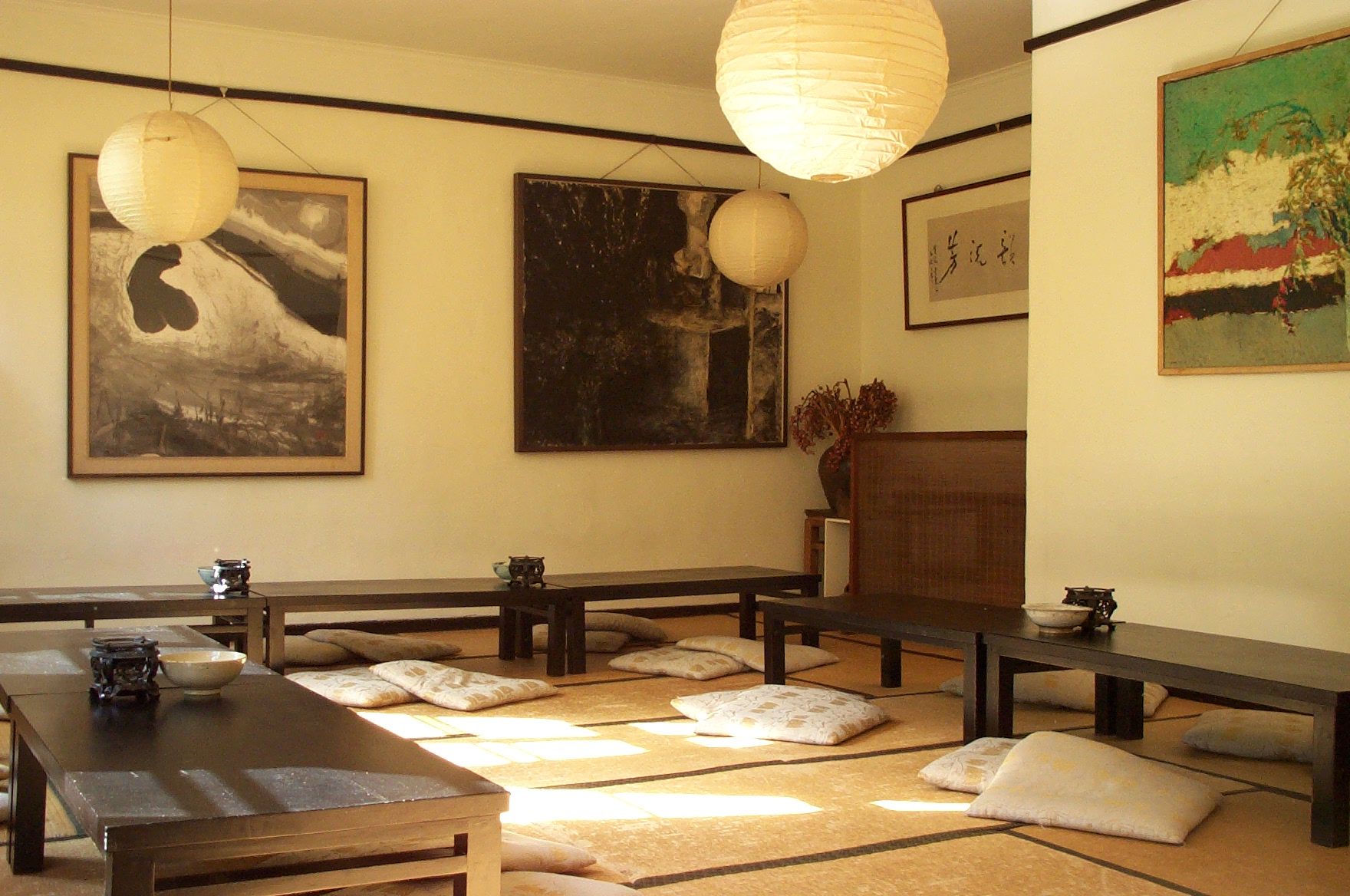
The Purple Cloud Pagoda
The Purple Cloud Pagoda on the second floor was newly built in 1963 and was named for its proximity to the heavenly white clouds. During the wistaria blooming season, one can overlook the splendid scene of wistaria vines covering the windows. It was previously mainly used for hosting small forums and lecture activities but is now used as a tea appreciation space and for hosting tea tasting experiences.
Tea-related books and publications are being gradually acquired, and donations from various sectors are welcome. Currently, the books and publications are for in-house reading only and are not available for borrowing. It is hoped that this space can become a platform for exchanging tea-related information. Those interested in delving deeper into tea culture research, both domestically and internationally, are welcome to inquire with the venue for further information.